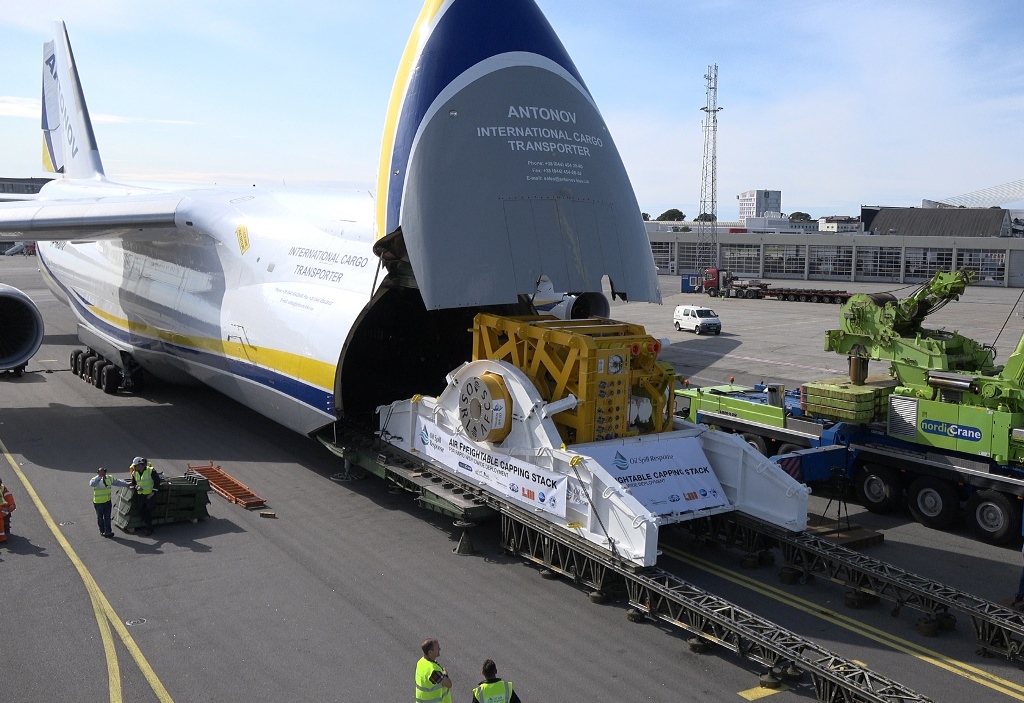Antonov Airlines and Chapman Freeborn carry out ‘ground-breaking’ oil spill equipment flight
10 / 09 / 2018

ANTONOV Airlines and Chapman Freeborn Airchartering have taken part in a "ground-breaking test flight" to transport by air, instead of by sea, a capping stack, which is the vital equipment used by the oil industry in the event of an oil spill.
The successful test flight – the first time ever that a complete capping stack has been transported by air – means that oil companies can now reach faraway oil spills much faster and cap the wells more quickly.
ANTONOV, working with charter specialist Chapman Freeborn and its client Oil Spill Response Limited (OSRL), deployed an AN-124 to carry the fully assembled subsea capping stack and housing, which weighed 85.5 tonnes and measured 11.5 m by 5.5 m by 3.9 m.
Prior to the successful 1h 23m test flight to and from Stavanger in Norway, transporting capping stack equipment by air would have meant breaking it down into multiple payloads and reassembling it at the destination, before moving it to the incident site.
“This was a very important test flight, as this represents the first time anyone has transported a capping stack on an aircraft that would be used in the event of an oil spill emergency, enabling a much quicker response anywhere in the world,” said Martin Griffiths, sales manager at the UK office ANTONOV Airlines.
“We faced a variety of challenges including limited clearance for the cargo, the weight and size of the capping stack itself and its effect on the flight, as well as the requirement to load it fully assembled, as would have to be the case in an actual oil spill scenario,” explained Griffiths.
The AN-124 was chosen for its ability to travel up to 5,000km with a 120-tonne payload, self-loading/off-loading capabilities, which removes the necessity for a main deck loader, and availability on the European spot market cemented the choice.
To enable the movement of the capping stack in a single operation, OSRL worked with L+M to design and build a bespoke frame, with support from Trendsetter, the capping stack manufacturer.
Chris Lund, technical manager for OSRL’s SWIS team, said: “Sea transport remains the most likely mobilisation option for the majority of well sites, but for wells in more remote areas, this is a vital addition to our subsea capping and containment offering."
Read more energy logistics news














